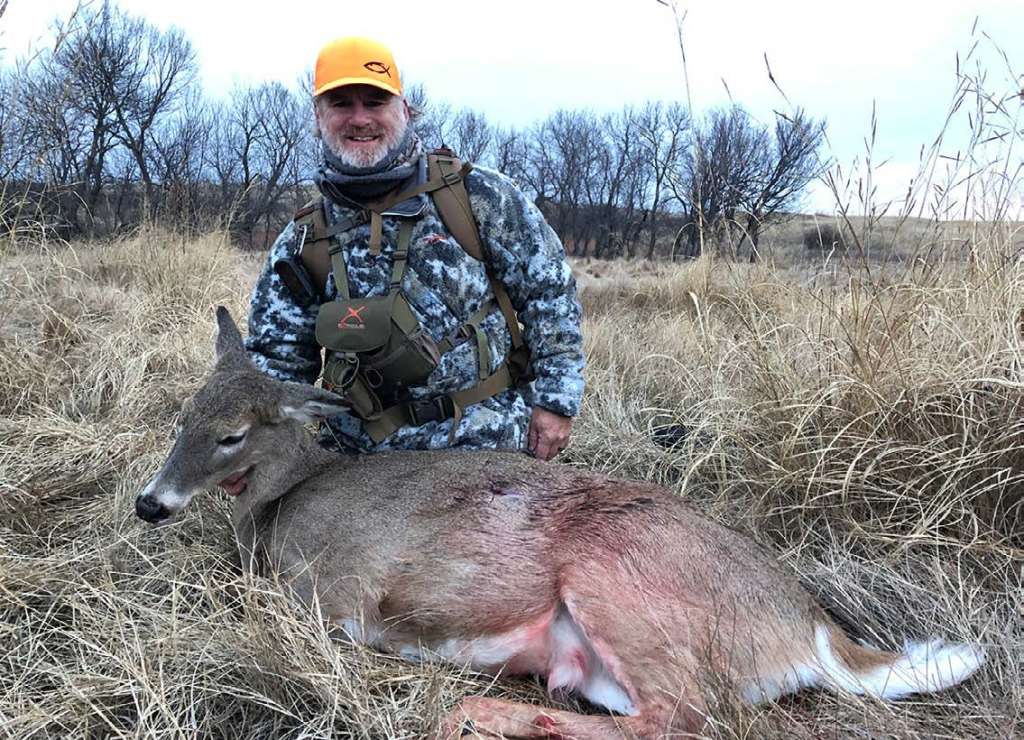It was opening day here in South Carolina. Sweat was rolling down my back. The temperature was pushing triple digits with 80% humidity. As the velvet buck showed himself, I was ready.
Early season in the South provides a time to get bucks in velvet if you can endure the heat and humidity. It also poses specific problems for the successful hunter. What do you do when you take the animal? How can you care for the animal and not let the meat spoil when it is this hot?
The same care is needed when it is hot or cold, but with temperatures this high, your time is limited. Speed is essential in preserving the quality of the meat. I have killed deer in early season, and within 10 minutes, flies are swarming the animal.
Depending on where you live in the country, field care for big game can mean many different things. For Western hunters, it involves complete skinning, dressing and often quartering or more of your game to get it out of the back country. Midwestern hunters often field dress, then do the rest at home since they can usually drive their trucks or UTVs to the animal. And in the South, (as a Southerner I can say this) most hunters take their deer to a processor who does it all for them for a fee.
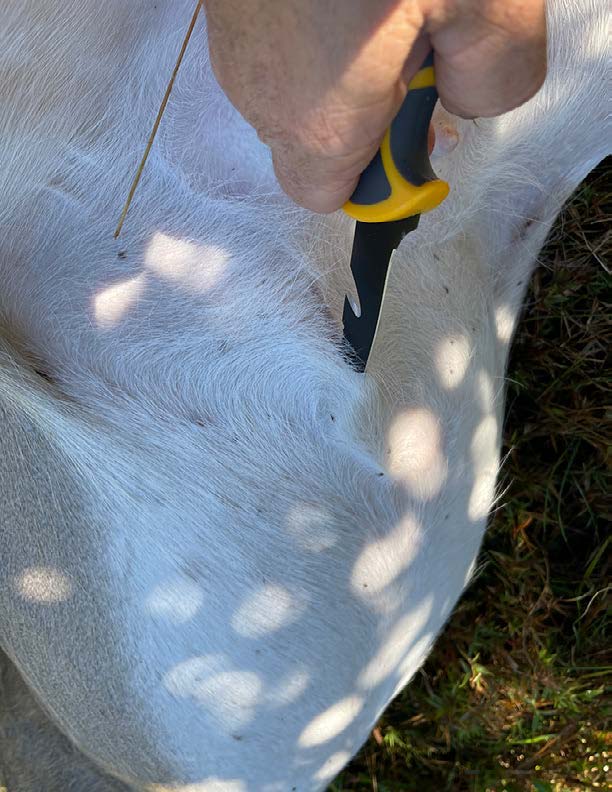
Personally, even as a Southerner, I have never understood someone who doesn’t clean his or her own deer, but we will save that discussion for another day. Proper care for your animal begins as soon as you arrive upon it in the field. Before the first cut is made, a plan needs to be in place.
Early-season care is far different than what you can do when it is cold. Warm-weather care for big game is more crucial due to the rapid decomposition that happens during the warm weather. Field dressing, which is simply removing the internal organs from the animal, is a must, especially during warm weather. And it should be done as soon as possible.
Field dressing is done by making a cut along the belly of the animal from the anal vent to the jaw. (NOTE: If you are planning on having your animal mounted by a taxidermist, do not cut the belly more than halfway.) Once the cut is made, you then remove the entrails in their entirety. Doing this allows the cavity to cool and lower the body temperature, which is the chief cause of spoilage. If you intend to save the heart and liver for later use, now is the time to harvest them. I keep several one- gallon Ziploc bags in my pack just for this. Here is a video I did several years ago on how to field dress your game. It will show you in detail how to do this.
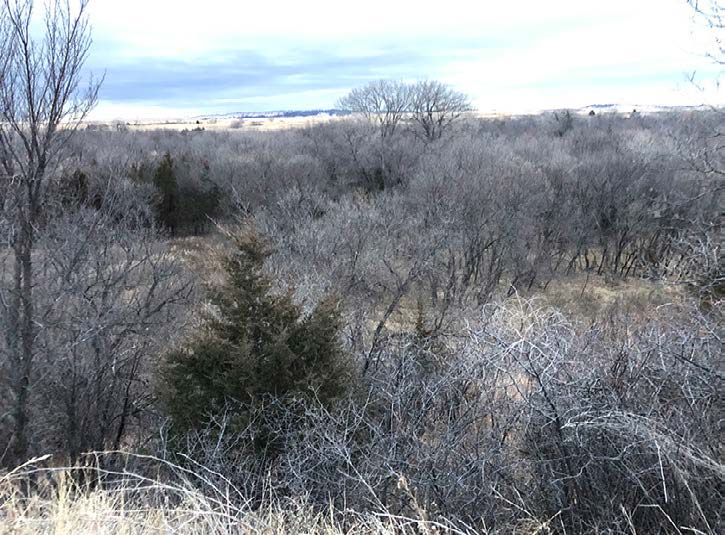
A Great Knife
Having a good quality knife is essential in field dressing and butchering. Many knives today have what is known as a gut hook that is designed to prevent puncturing the entrails while dressing the animal. The EdgeSport folding knife by Smith Consumer Products has a combination of a gut hook and lock blade, making it the perfect blend for cleaning game afield. It’s one knife that does it all. It is important to note that even the best knife gets dull while butchering afield. Keen edges striking bone and sinew will make even the best knife dull. Having a portable sharpening system, such as the PP-1 Tactical, is ideal for a quick hit of the edge and that gets you back to work.
Getting the intestines and organs are the first and most crucial step in field care. Not only do you need to remove the entrails but also do all you can to keep debris out of the cavity. There are several ways to do this. First is to carry the deer out of the bush, or use a pack animal, ATV, UTV or another mode of transportation. If you must drag your deer out of the bush after field dressing, use some paracord or other rope to sew the opening closed to keep it clean as you drag.
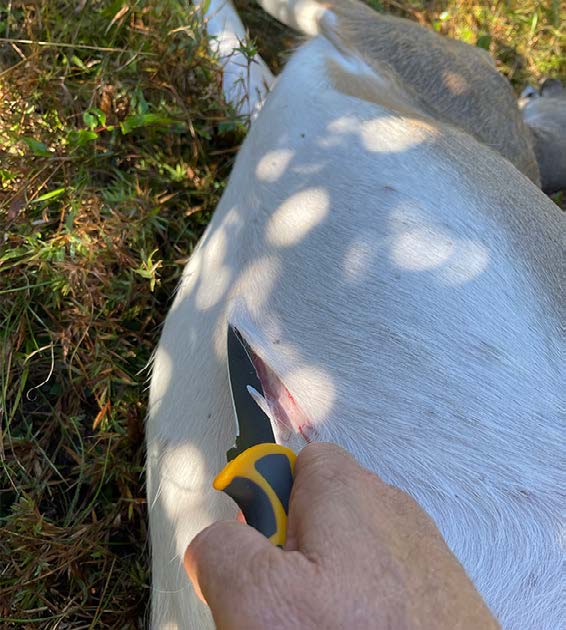
Deboning in the Field
If you are packing your animal out on your back or with livestock, more detailed butchering is needed. Some states require all edible meat to be removed before the head is removed from the field. (Please check your local rules and regulations.) Here is where a good boning knife is needed to get it done as simply as possible.
If I am packing the meat out, personal preference is to debone the meat in the field and not have to haul out heavy bones. The Edgesport six-inch boning knife is a good choice for this. It is light, sharp and gets the job done efficiently. For my money, smaller is better here. I prefer a shorter blade with a keen tip to get into the tight areas for deboning in the field. These two knives, the Edgesport Folding and the Edgesport deboning, are the perfect pair. This process can be slow and tedious, but these tools save my back and are worth the extra effort. It is estimated that 50% of the live weight of a deer, elk or other big game animal is bone. I prefer not to carry all that bone out of the woods.
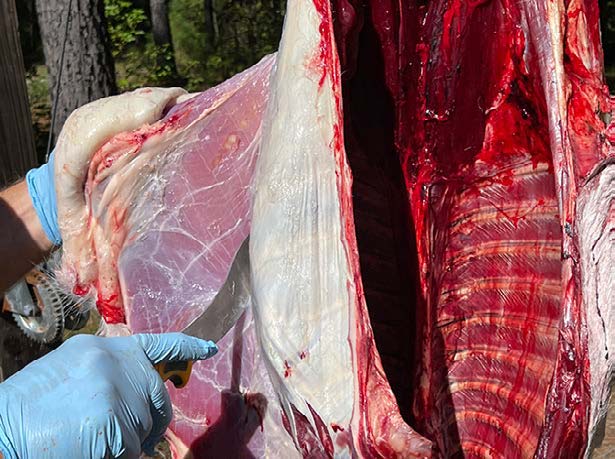
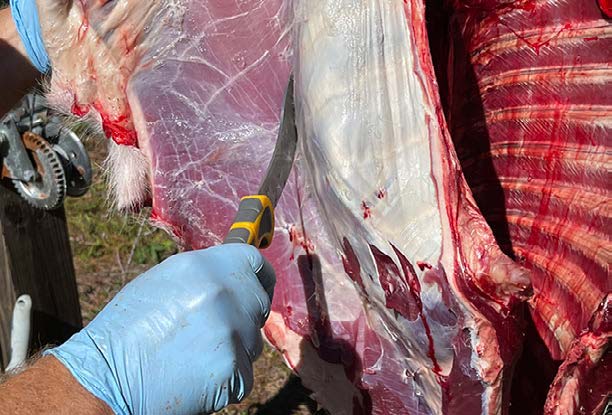
Being prepared in advance makes field care an easier task. A recent late-season muzzleloader hunt in Central South Dakota found me in just this situation. Early that morning, I sat on the edge of a bluff overlooking a large drainage area and open prairie. With an either-sex tag in my pocket and it being the last day, my options for taking home some South Dakota venison were narrowing quickly. I determined that the first legal adult deer would find my sights on its vitals.
As fate would have it, a big—and I mean BIG— adult doe wandered into the drainage at 88 yards. Resting my crosshairs on her shoulder, I fired, and she whirled, running down the drainage into the open prairie where I saw her tumble.
Being an estimated 1.5 miles from camp, I determined that I had only one choice. I needed to dress, debone, and pack her out. What seems like an overwhelming process is not difficult when faced with the alternative. Her estimated live weight was well over 150 pounds and closer to 180 pounds, by far the largest doe I have ever taken. After deboning and dressing, her packed-out weight was about 75 lbs. of edible meat. (Statistics show that only 35-40% of live weight is edible meat.)
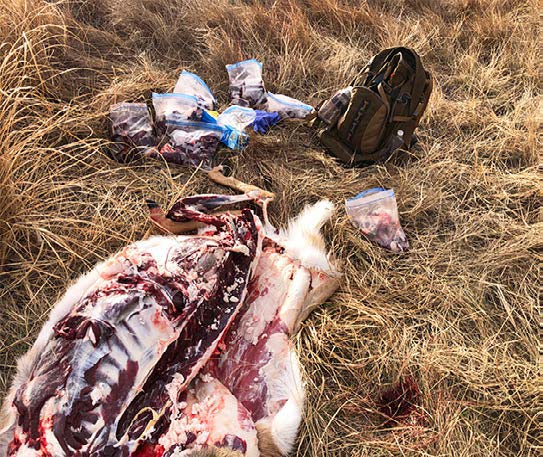
Essential Bags
Using one-gallon Ziploc bags, I was able to get her completely processed in about 90 minutes, and this enabled me to make one trip instead of several. Having to cut it up into such small sizes took a lot longer in the field. An alternative choice could have been to use large construction garbage bags or game bags, and take out larger pieces.
Ideally, using a garbage bag to line your pack and then putting the quarters in game bags is the best solution. When you return to camp, you can hang your game bags allowing the meat to cool down. The garbage bag keeps the inside of your pack clean and the meat clean as well. My South Dakota doe used 14 one-gallon Ziploc bags.
A buck would have added several more. For bigger animals such as elk, bear, or moose, it’s best to use cloth game bags like those from Caribou. They make kits for different- sized game that are packable and contain everything you need to get your game meat out.
Too much effort goes into getting that big game hunting trip animal for you to inadvertently ruin the meat with improper field care. Go afield expecting success and be prepared to take care of your animal as soon as you can, and you will reap the reward of excellent table fare.

GEAR USED:
www.smithsproducts.com
https://www.caribougear.com
Pete Rogers Outdoors YouTube
Best method for field dressing your deer Video
Per our affiliate disclosure, we may earn revenue from the products available on this page. To learn more about how we test gear, click here.



